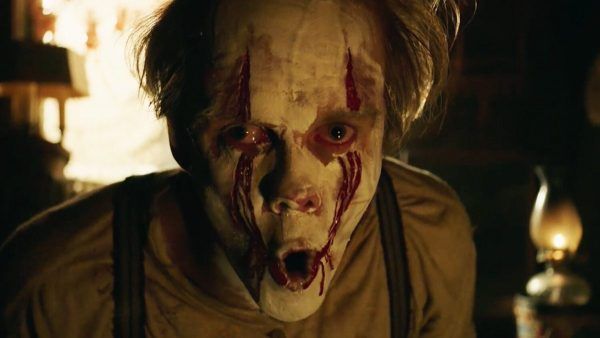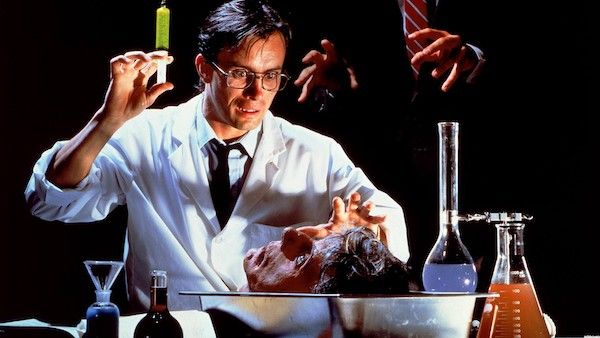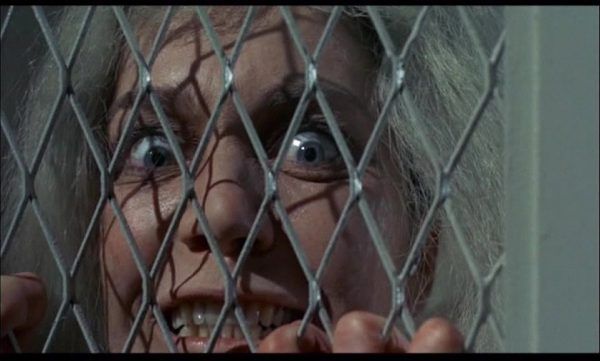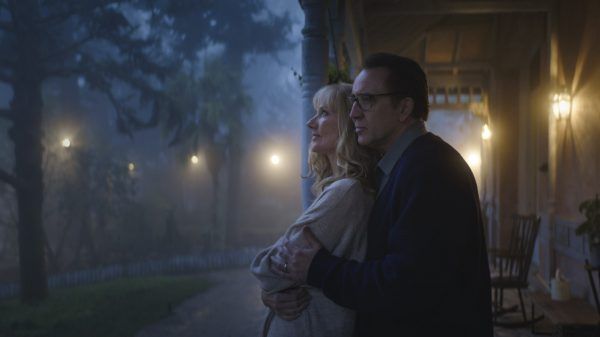RIchard Stanley’s Color Out of Space hits digital this week, and that’s a big thing to be excited about. And it’s not simply because Color Out of Space is Stanley’s first project since the legendary fiasco that was 1996’s The Island of Dr. Moreau (the subject of the truly excellent documentary Lost Soul), although that’s a huge part of it. Nor is it just because it’s a gonzo indie film pitting Nicolas Cage against invincible forces of cosmic horror. (Who else would you elect to represent humanity in that situation?)
No, the reason to get excited is because Stanley’s new film is an adaptation of one of famed horror author H.P. Lovecraft’s most iconic stories. It’s also one of the very few film adaptations of Lovecraft’s work.
Lovecraft has had a major influence on modern horror fiction for the past 100 years. Stephen King constantly references Lovecraftian names and places in his novels, and some of his most popular ideas are heavily inspired by the author’s work. IT’s Pennywise the Clown is essentially a Great Old One from Lovecraft’s Cthulhu mythos, two words that Google Docs did not underline as being misspelled. The ultimate gauge of whether or not something is in the mainstream in 2020. His work influenced other major writers like Neil Gaiman, Clive Barker, Alan Moore, William S. Burroughs, and Psycho author Robert Bloch. So how come so few of his stories have been directly translated into films?
Hollywood has been mining King’s work for decades, and has started looting his literary treasury with increased fervor thanks in part to the streaming wars (virtually everything he’s ever written is being developed as a series or film right now, to the point where Hulu is probably hours away from buying the rights to his Buffalo Wild Wings receipts). But Lovecraft is comparatively untouched, despite the fact that he has been dead approximately forever and most of his work is in the public domain (meaning anyone is free to adapt it).
The two best Lovecraft films are arguably Stuart Gordon’s Re-Animator and John Carpenter’s In the Mouth of Madness. But Re-Animator is a loose adaptation at best, and Carpenter’s film is an homage to the author’s work not actually based on any of his writing.
Meanwhile, The Colour Out of Space is one of Lovecraft’s most adapted works, if not the most adapted. The Boris Karloff film Die, Monster, Die! is a hilariously loose adaptation but still a recognizable one, with the same basic plot of a meteorite crashing to earth and infecting the plant and animal life around it. The 1987 film The Curse is more close to the source material, but updates the story to contemporary times (Stanley’s new adaptation does the same). Ironically, Stephen King’s novel The Tommyknockers borrows heavily from The Colour Out of Space by the author’s own admission, except in King’s story the source of the blight is an alien spacecraft rather than a malevolent cosmic fragment. And that book got a reasonably faithful adaptation as a miniseries starring Jimmy Smitts. I want to see Smitts in Lovecraft Country, dangit. There was also a pretty cheesy version of The Dunwich Horror made in 1970 starring Quantum Leap’s Dean Stockwell and Ed Begley in his final film role, and that is approximately the most notable thing about it. And other than a small handful of incredibly loose adaptations, that’s pretty much it.
Oscar-winning filmmaker Guillermo Del Toro has been trying to get an adaptation of Lovecraft’s novella At the Mountains of Madness made for years to no avail. Cthulhu is such a recognizable horror figure that he regularly pops up on bumper stickers, but we’ve never seen a major film or TV adaptation of “The Call of Cthulhu”, the story in which the monstrous extra-dimensional being was created.
So why is Lovecraft, one of the most popular and influential architects of horror and the man for whom the entire subgenre of Lovecraftian horror is named, so largely absent from film and television adaptations?
Part of it could be the fact that Lovecraft’s work has been called “unfilmable.” The vast majority of his fiction involves unreliable narrators, heavy internal monologues, and very little action. Most of the horror of his stories come from what is not seen, and when a phase beast or dimensional shambler or some other mind-rending cosmic terror does show itself, the characters are often so irrevocably shaken by the insanity of what they are seeing that they are incapable of providing a complete or accurate description. (This is a device King has borrowed in his own work, most famously when revealing the true form of Pennywise in IT.) According to Lovecraft historians, and personal writings by the author himself, Lovecraft didn’t believe in his ability to write action scenes, so he tended to avoid them.
Also, Lovecraft worked entirely in the realm of short fiction. With some notable exceptions, the majority of his stories are only a few dozen pages long. Some are even shorter than that. Given the challenge of visually adapting his bizarre descriptions paired with the limited narrative of most of his work, I can understand a producer looking at a pile of Lovecraft manuscripts and shouting “HOW IS ANY OF THIS A MOVIE?” into a tumbler of scotch. The much-adapted King writes his novels like screenplays (for the most part), so the journey from page to film is much clearer. Lovecraft wrote spooky literary essays to impress the editors of unspeakably nerdy pulp magazines. The popcorn appeal there is way less obvious.
Whatever the case may be for the relative lack of Lovecraft adaptations over the past several decades, Color Out of Space looks like the World Series for Lovecraft fans, which is an analogy the author himself would’ve hated, because he allegedly despised games. That’s because Stanley has said that he’s currently working on adapting Lovecraft’s short story The Dunwich Horror into a movie that will connect to Color Out of Space as part of a trilogy in an expanded Lovecraft cinematic universe. Like The Colour Out of Space, Dunwich has been adapted into film a handful of times, and together with The Shadow over Innsmouth form the three of the author’s stories with the most adaptations. So if The Dunwich Horror ends up happening and manages to be successful, I’ll bet a canvas bag full of chthonian artifacts that the third film will be The Shadow over Innsmouth. And hopefully Nicolas Cage will be in all three.





